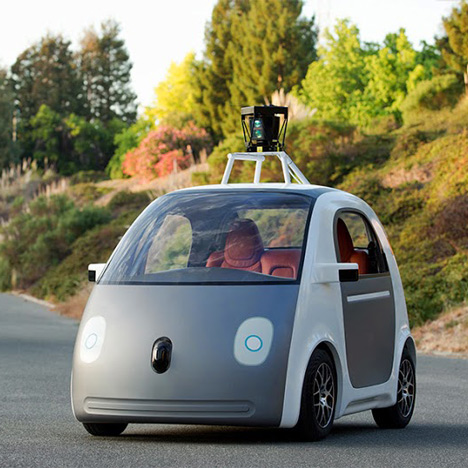
Coming soon: driverless trains, planes and automobiles
Following the unveiling of designs for London Underground's first fleet of driverless tube trains by Priestmangoode, we've rounded up seven of the most intriguing and disruptive driverless vehicles from the pages of Dezeen.
From the first fleet of Google cars to flying delivery services and automated cargo trucks, driverless vehicles are set to transform transport networks for both commuters and businesses. But, despite promises to improve efficiency and safety performance, the technology has proven controversial.
New Tube for London by Priestmangoode and Transport for London
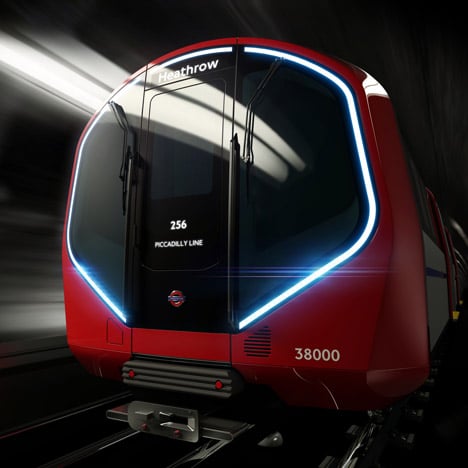
London studio Priestmangoode has unveiled its vision for the future of London's underground trains, with an air conditioned, wi-fi enabled, driverless design that could be running on the rails as soon as 2020.
"Automation is going to come," said London mayor Boris Johnson at the launch. "This train will allow us to do that".
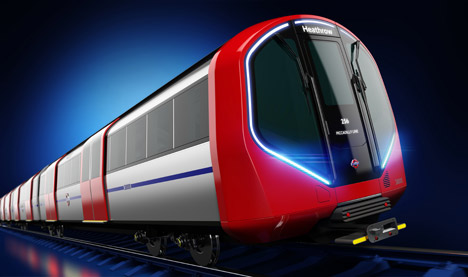
"As a design team we have to allow the thing to evolve through its life," studio co-founder Paul Priestman told Dezeen. "These things are not really going to go into service until 2020, and will run for another 30 or 40 years after that so you have to think about every eventuality that might happen." Find out more about this design »
First public test of Google's driverless car prototype

Expected to hit public roads "in the next couple of years", the much-hyped prototype by the tech giant was tested by non-Google employees for the first time this year.
The car has in-built sensors that can detect objects in its vicinity and a speed cap of 25 miles per hour.
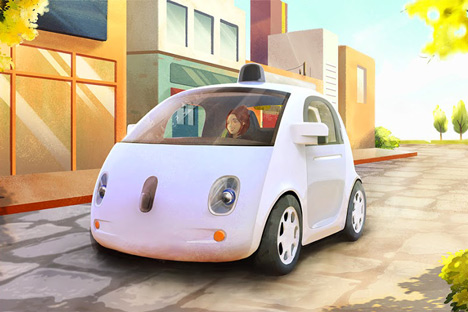
"Our cars are designed to operate safely and autonomously without requiring human intervention," said Chris Urmson, director of Google's self-driving car project.
But California's department of motor vehicles swiftly introduced new safety rules, forcing Google to add steering wheels and brake pedals to its design if it wants to take the fleet out on the road. Read more about Google's driverless car »
Google's Project Wing drone delivery system
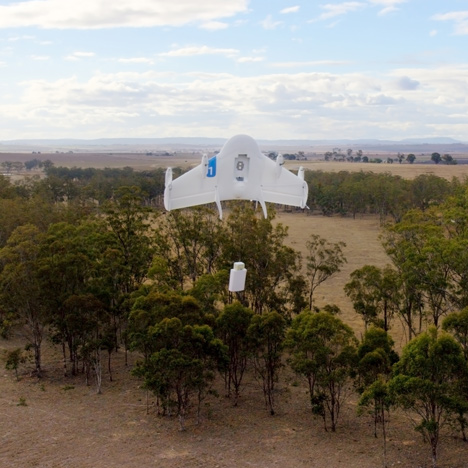
Google is also taking automation to the skies. Earlier this year the company revealed it was testing a delivery service using unmanned aerial vehicles in Queensland, Australia.
Video footage shows white aeroplane-shaped self-flying vehicles successfully delivering a first-aid kit, snacks, dog treats and water to farmers in the Australian outback. Each device is powered by four rotors, with two on each wing allowing it to fly both horizontally and vertically.
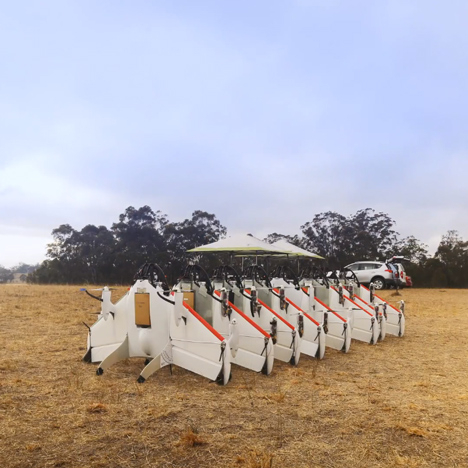
"Self-flying vehicles could open up entirely new approaches to moving goods – including options that are cheaper, faster, less wasteful and more environmentally sensitive than what's possible today," said a statement from the company. Find out more about this project »
XchangE driverless car and mobile office concept
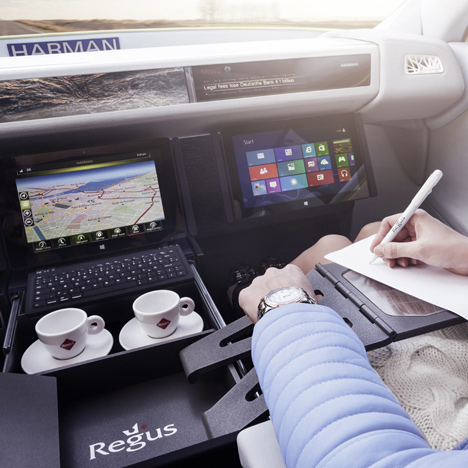
Swiss automobile company Rinspeed has thought a bit further forward, imagining what we might use the space in our cars for when we no longer need to hold the wheel. Its XchangE concept car concept car transform's a standard Tesla Model S sedan into a mobile office complete with computer workstations.
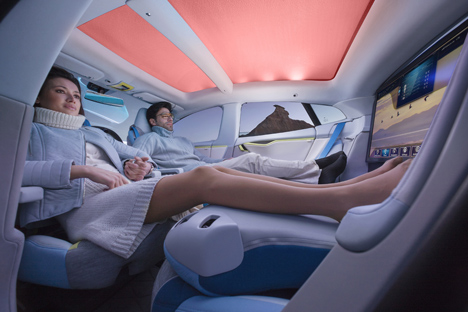
"So far hardly anyone has taken this to its logical conclusion from the perspective of the driver," explained Rinspeed founder Frank M. Rinderknecht. His proposal also includes a flat bed and entertainment systems. Find out more about this design »
Dominic Wilcox's Stained-glass Driverless Sleeper Car of the Future
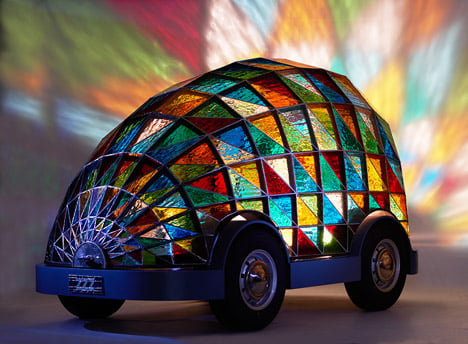
As part of the Dezeen and MINI Frontiers Future of Mobility exhibition, British designer Dominic Wilcox imagined a future of fully automated, computer-controlled vehicles, where traffic collisions will be a thing of the past.
"In the future it will be safer to drive in a driverless car than it will in a manual car," said Wilcox. "Therefore we don't need the protection systems that are built into contemporary cars. We can just have a shell of any design."
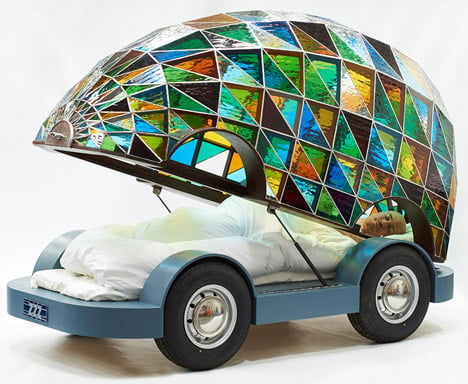
The resulting design is made up of a colourful stained-glass shell that opens up to reveal a large, comfortable bed. A website accompanying the project suggests various other options for a customisable taxi service, including cars designed for sunbathing, romantic dinners and even one shaped like a treehouse. Find out more about this design »
Honda's automated driving technologies aim for a "collision-free society"
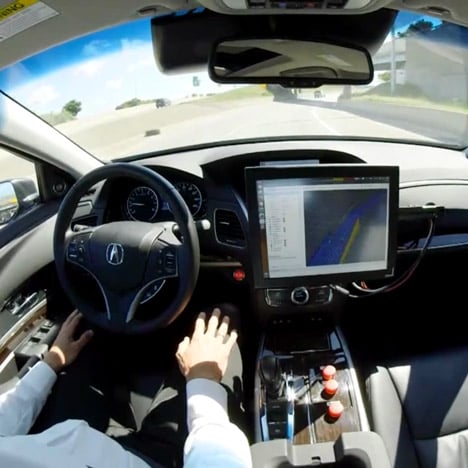
Japanese car manufacturer Honda is focusing on design rather then technology with its 2015 Acura TLX saloon, which offers a halfway house between a standard manual car and Google's fully automated vision.
The saloon uses wireless connections with other road users to make safety decisions and steer occupants out of harms way. Already being demonstrated on public roads, the car can automatically merge, exit and change lanes on a motorway.
"The creation and deployment of advanced, intelligent transportation systems represent the new frontier in the effort to one day eliminate traffic collisions, injuries and fatalities," said Frank Paluch, president of Honda's American research and development. Find out more about this project »
Future Truck 2025 by Mercedes-Benz
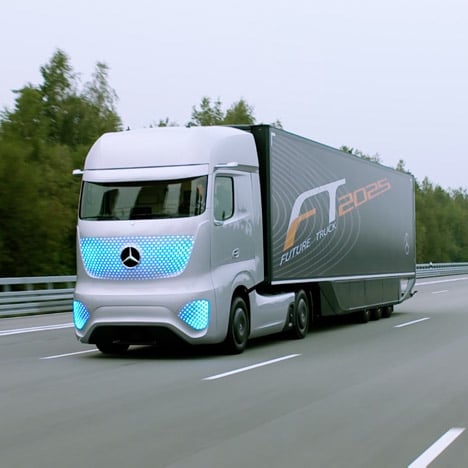
German manufacturer Mercedes-Benz has unveiled an autonomous lorry that could drive itself across Europe within the next 10 years.
The lorry uses cameras instead of mirrors, as well as radar sensors to monitor the road and drive safely. It can also connect with other vehicles to use information and data they generate to control its speed and respond to changing road conditions.
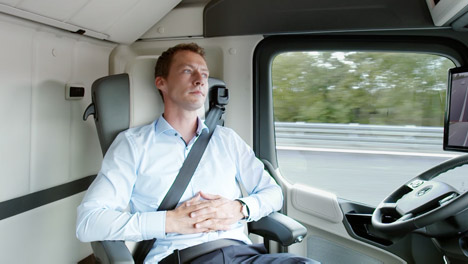
Mercedes-Benz's Daimler Trucks division created the prototype, which the company says could help reduce emissions, and increase road safety.
"The challenge now is to leverage this momentum and to continue our open dialogue with all parties involved, so that in 10 years' time the autonomously driving truck will indeed have become an accepted feature on our roads," said Wolfgang Bernhard, head of Diamler Trucks. Find out more about this project »